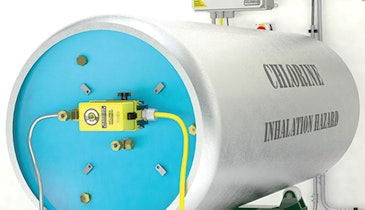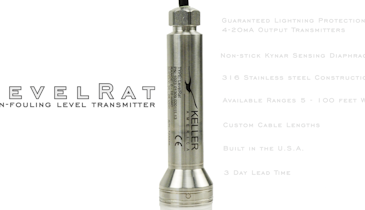Interested in Energy?
Get Energy articles, news and videos right in your inbox! Sign up now.
Energy + Get AlertsEnergy audits have been around for a long time, most likely since the first oil price shocks during the Jimmy Carter administration, which is when the cost of energy became a significant concern.
The Sustainable Operations feature in this month’s TPO reminds us how valuable an energy audit can be. At the clean-water plant in Stratford, Ontario, an energy assessment by the local electric utility and the plant’s contract operator pointed to a series of improvements, chiefly a blower retrofit. Savings from that alone were projected at more than $1 million over 20 years.
Has your water or wastewater treatment plant gone through an energy audit lately? If not, perhaps the time is right.
Know the differences
If you decide to pursue an audit, it’s useful to note that there are different types, or levels, and to choose the one that best fits your needs. As in any other endeavor, you get what you pay (or don’t pay) for.
Some energy audits are free. Often these are conducted by utility companies or equipment vendors. A free audit may or may not be comprehensive; it may identify only the most obvious savings opportunities. And in some cases, that can be well worthwhile.
On the opposite end of the spectrum are energy audits that involve engineering evaluations; these may come with substantial price tags. The price may prove worth paying if the audit uncovers savings opportunities that a no-cost audit would not. On the other hand, an audit that costs, say, $20,000 is no bargain if it yields only a similar amount in savings.
Which type?
Organizations classify energy audits in different ways, but there are basically four tiers.
The first tier consists of energy benchmarking. If you took this elementary step, you would work with an expert to study your plant’s past data on fuel and electricity expenses, and then compare your findings against results from other plants of similar size and with similar processes. You could then use the data to see where you stand against your peers and decide whether a more detailed audit might be worthwhile.
The second tier involves a review of your utility bills and a walk-through of your plant with someone well versed in water facilities and their energy usage. Many utilities and some consultants offer this type of audit at no charge. It’s a good way to find low-hanging fruit — places to save large amounts of energy and money without a big investment, or with a big investment that pays back fast. It can also help you find areas that might warrant a closer look.
The walk-through will give you a reasonably detailed look at how you’re using energy and the large energy consumers, like aeration, pumping, filtration and solids handling. At the end, you receive a summary report and recommendations.
Digging deeper
The third tier is more and may simply follow up on the walk-through, providing more detail. It might look into areas such as your basic building heating, cooling and lighting systems, roof and wall insulation, the condition of windows and doors, compressed air systems, and other mechanical and electrical systems. It usually includes some level of economic and engineering analysis, and predictions of return on investment for various energy-saving measures.
The fourth and final tier is often called an investment-grade energy audit. It’s a comprehensive analysis of the improvements you could make, with a tight focus on return on investment. This type of audit is typically not free and in fact can be expensive, but it can also be well worth the up-front expense.
An investment-grade audit generally includes a close look at utility rate structures and assesses how changes in usage patterns — such as shifting some operations to off-peak times when power is cheaper — might reduce costs. It also may include a complete inventory of all energy-using equipment.
This kind of audit can be used to support a large and varied package of energy improvements, in which some have fast payback, others have slower payback, and in aggregate the investment has an acceptable payoff.
Project packages are often undertaken as performance contracts in which an energy service company finances the improvements, which are then paid for over a number of years out of resulting savings that are guaranteed by contract. It usually takes an investment-grade audit to support such savings guarantees.
What’s best for you?
So, those are the basics. There is a lot of good information about energy audits online; your local electric and gas utilities may also be good sources. Energy isn’t likely to get cheaper. An energy audit can be a good way to start taking control of that component of your costs.





